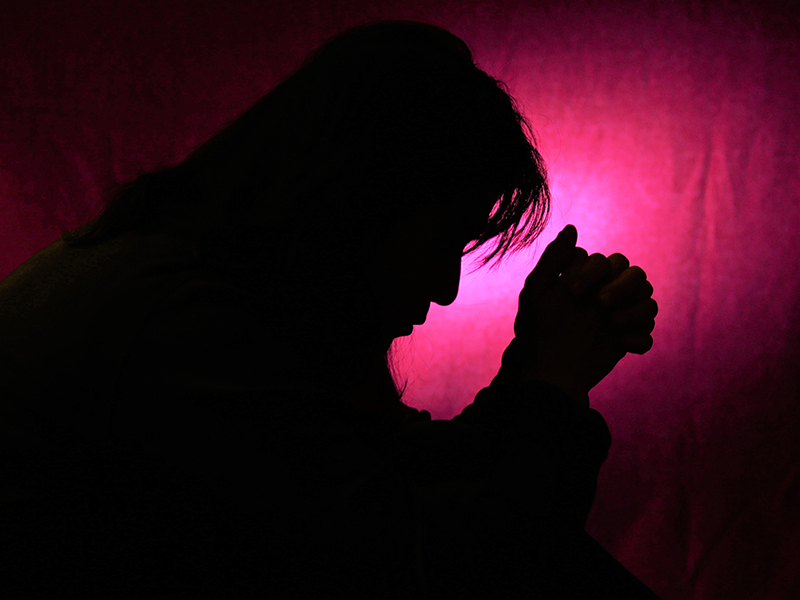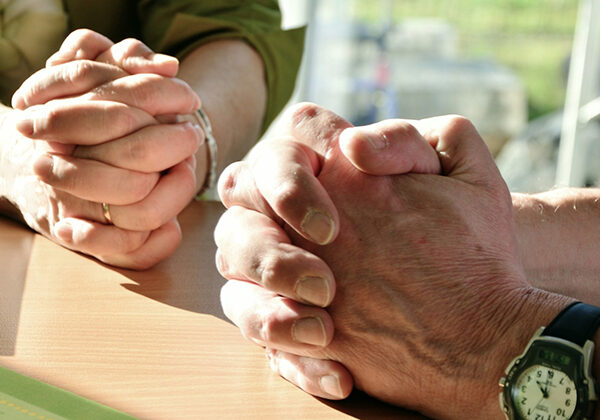MENTAL ILLNESS – AN OVERVIEW
The Well Community serves adults living with chronic and debilitating mental illnesses that have led them into poverty, isolation and additional health concerns.

What is Mental Illness?
A mental illness is a medical condition that disrupts a person’s thinking, feeling, mood, ability to relate to others and daily functioning. Just as diabetes is a disorder of the pancreas, mental illnesses are medical conditions that often result in a diminished capacity for coping with the ordinary demands of life.
Serious mental illnesses include schizophrenia, bipolar disorder, major depression and schizoaffective disorder. Among other types of mental health conditions are obsessive-compulsive disorder (OCD), panic disorder, post-traumatic stress disorder (PTSD) and borderline personality disorder. The good news about mental illness is that a stable and meaningful life is possible.
Mental illnesses can affect individuals of any age, race, religion or income. Mental illnesses are not the result of personal weakness, lack of character or poor upbringing. Mental illnesses are treatable. Most people diagnosed with a serious mental illness can experience relief from their symptoms by actively participating in an individual treatment plan.

Common Myths About Mental Illness
- Those living mental illnesses are dangerous.
- People with mental illnesses are mentally retarded.
- Mental illness is the result of sin.
- Mental illness or lack of healing is caused by a deficiency of faith in God.
- Those living with mental illnesses should be treated differently and viewed primarily through the lens of their diagnosis.
- Mental illness is the result of personal failure.
- Mental illness is caused by problems within families or results from bad parenting.
- People with mental illnesses are not spiritual people.
- Individuals with mental illnesses are demon-possessed.
- People with mental illnesses are all the same.
What Does Hope Look Like?
The journey to dignity and stability is unique for each individual. Growing in stability is a process, not an event. The uniqueness and individual nature of each journey must be honored. While serious mental illnesses impact individuals in many ways, the Well Community believes that all individuals can move toward meaningful and stable lives.

Mental Illness by the Numbers
Critical Need*:
- One in five adults—approximately 57.8 million Americans—experience mental illness in a given year.
- One in 20—about 14.1 million—live with a serious mental illness such as schizophrenia, major depression or bipolar disorder.
- Approximately 45 percent of adults and half of youth ages 6-17 living with a mental illness received no mental health services in the previous year.
*National Alliance on Mental Illness – NAMI
Increasing Demand, Inadequate Treatment:
- Texas ranks 50th among the states for access to mental health care. (Mental Health America)
- Metrocare, the largest provider of mental health services in North Texas, serves more than 50,000 adults and children annually. (Metrocare Services)
- A minimum of 50 beds per 100,000 people is considered necessary to provide minimally adequate treatment for individuals living with severe mental illness. Texas has just 8.1. (Treatment Advocacy Center)
The Impact on Society*:
- Serious mental illness costs America $193.2 billion in lost earnings per year.
- Mood disorders are the most common cause of hospitalization for all people in the U.S. under age 45 (after excluding hospitalization relating to pregnancy and birth).
- Rates of cardiovascular and metabolic diseases are twice as high in adults living with serious mental illness when compared to the general population.
- Students ages 6-17 living with mental, emotional or behavioral concerns are three times more likely to repeat a grade.
- In the U.S., suicide is the 12th leading cause of death, the second leading cause of death among people aged 10-14 and the third leading cause of death among those aged 15-24.
- Ninety percent of those who die by suicide show symptoms of a mental health condition.
- Approximately one in five people experiencing homelessness in the U.S. lives with a serious mental health condition.
- About two in five people who are incarcerated have a diagnosed mental illness.
- Seventy percent of youth in juvenile justice systems have been diagnosed with at least one mental health condition.
*National Alliance on Mental Illness – NAMI

Frequently Diagnosed Mental Illnesses
Schizophrenia, bipolar disorder, major depression and schizoaffective disorder are some of the most debilitating mental illnesses. The Well Community serves those struggling with these and other related conditions.
Treatment
When mental illnesses are left untreated, the symptoms can become more pronounced. Early diagnosis is important so that those who are struggling can receive effective treatment.
Because mental illnesses are typically persistent illnesses, continuous maintenance is recommended to prevent recurring symptoms. There is no one-size-fits-all approach. It is essential that each person struggling with a mental health issue have a plan that is specific to his or her needs.
Effective treatment plans usually include medication, psychotherapy, education, self-management strategies and external supports such as family, friends and formal support groups. The Well Community provides a place of support and assistance for those dealing with many kinds of mental illnesses. Our services, combined with the other components of an individual’s treatment, help to prevent relapse and reduce the severity of symptoms.


Medications
An effective treatment plan for mental illnesses usually includes medication to address the chemical imbalances in the brain that cause most disorders. There have been major advancements in research and in the development of psychotropic medications in the last decade. Several classes of medications are now available that help psychosis (antipsychotics), depression (antidepressants), anxiety symptoms (anti-anxiety medications) and mood instability (mood stabilizers and others).
Different people respond to medications in different ways. While these drugs are usually effective, they also have side effects that need to be monitored and minimized. Often, multiple types of medication must be assessed in order to find the one, or ones, that are the most effective for an individual. These negative side effects, along with a sense of being “cured” and a condition called anosognosia, are factors that contribute to non-compliance in medication treatment. At The Well, community members encourage one another to participate fully in their individual plans for better mental health, including following through on medication recommendations. To find the most up-to-date information on medicines used for mental illness conditions, visit http://www.fda.gov.
Resources
Mental Health America – www.mentalhealthamerica.net
Boston University’s Center for Psychiatric Rehabilitation – www.bu.edu/cpr
Wellness Recovery Action Program (WRAP) – www.mentalhealthrecovery.com
National Center for Complementary and Alternative Medicine (NCCAM) – www.nccih.nih.gov
National Institute of Mental Health (NIMH) – www.nimh.nih.gov
National Alliance on Mental Illness – www.nami.org
Grace Alliance (Waco, Texas) – www.mentalhealthgracealliance.org

